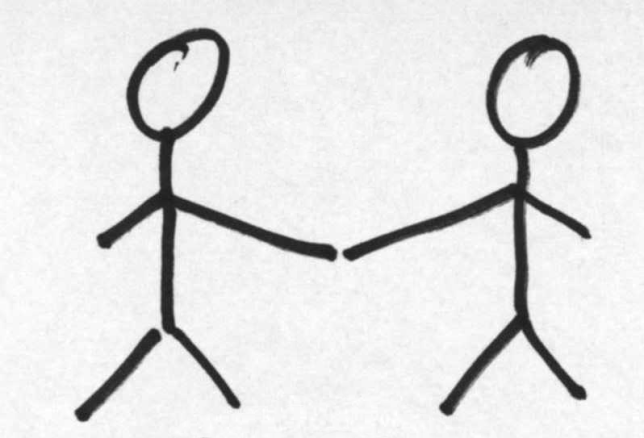Today I provide this link only which offers some new insight into quantum mechanics. The implications for faucer theory, and how these phenomena are explained in fauceir terms has to be postponed.
Category Archives: Abstract thinking
Is evolution science?
This question rests with the definition of evolution. The main problem in discussions about evolution and science arises when people use different meanings to the same word. People cannot understand each other if they are talking different languages and use different words for the same meaning. But people are aware of that and use dictionaries then. They are less aware, though, of the converse problem, so dictionaries are not applied or provide only rudimentary answers. Therefore everybody who enters the discussion has to define the terms he is going to talk about if it is not common sense, which it is less often than assumed.
There are people who define evolution as a fact. I’m rather inclined to support this. Facts are my hands, computer, and coffee mug. You can study these facts but you’ll never call them science. The difference between evolution and the facts mentioned above is that evolution is an abstract fact such as my ideas, but also economy, climate, population, insects and so on. These are also facts that can be studied by science but are not science itself.
Well some other people believe that evolution is science about evolution. This is not correct though. Throughout science we use different terms for facts and science about these facts to avoid namely this confusion. For instance climatology, → climate, entomologie → insects, psychology → my ideas and so on. Unfortunately we lack such a term to study the fact of evolution. This is probably because we have only one dominating theory about evolution, the Darwinian theory and its offspring. Once we have many theories, the fauceir theory for instance, we essentially need a term that describes the science that is focused on the fact of evolution, evolutionology or something like that.
Also some people equate evolution with the theory of evolution. This meaning of the term is not correct either as even before Darwin there existed several theories of evolution and sooner or later they will be numerous. Challenging this meaning of the term evolution as being not science is challenging the theory of evolution. Well of course every theory has to be checked whether it complies to the rules of science. But that a theory is consistent with these fundamental principles of science does not mean it cannot be improved. The history of science is a history of an steadily increasing number of theories. Some replacing some coexisting.
Finally there are people who understand evolution as a religion or at least as a backbone of a certain faith. This position can be found among supporters and critics likewise and of course if such a meaning of the term evolution is applied it is not science at all.
Evolution of Abstract Terms
This post is a sequele to persona’s picture story (I concede he is the more gifted artist.) that illustrates Brian Boyd’s idea about story telling as an Darwinian process. His book “On the Origin of Stories” is remarkable for its intention to extend the laws of evolution to human cognitive processes, which is easily accomplished if employing the fauceir abstraction.
 In step one, the story happens between these two people.
In step one, the story happens between these two people.
 In step two, these two people communicate by story telling that arouses feelings as if they were actually in the story. It doesn’t matter whether the stories are reminiscences or conjured up.
In step two, these two people communicate by story telling that arouses feelings as if they were actually in the story. It doesn’t matter whether the stories are reminiscences or conjured up.
 Finally in the third step, the abstract term (♥) is born that represents similar stories in these people’s brains. Now they cease to communicate whole stories. Instead, they use abtract representations of it.
Finally in the third step, the abstract term (♥) is born that represents similar stories in these people’s brains. Now they cease to communicate whole stories. Instead, they use abtract representations of it.
Abstract terms, fauceirs actually, follows the same evolutionary rules as every fauceir. They can evolve and adapt. The process of forced and purpuseful adaptation of a term is called propaganda, which is an example of intelligent design performed by humans.
There is Progress in Evolution
Decorating eggs before Easter
Eggs are decorated before Easter worldwide. As part of local folklore, techniques vary however. In some Sorbic villages around Schleife, wax is printed by the help of goose feathers on the egg shell. The feather is cut to form simple geometrical shapes; the triangle is the most common as it results naturally from the feather’s anatomy. It is the artisan’s skills, fantasy, and imagination that develops ever varying decorations. Children learn this skill from early childhood as it is a tradition in each household to decorate eggs on Good Friday.
One may fancy that this way of decorating eggs helped to develop fauceir theory as like this type of decoration that yields complex ornaments with simple geometric shapes is the same approach used by fauceir theory. Fauceir theory develops solutions to complex evolutionary problems by the help of units with only a limited set of attributes. Besides, the Ancient Greeks, developed their phonetic spelling in a period when decoration with ornaments was flourishing, while in other parts of the world where ornaments have not been as common hieroglyphics survived. Also we consider the first ornaments in ochre the beginning of human abstract thinking.


